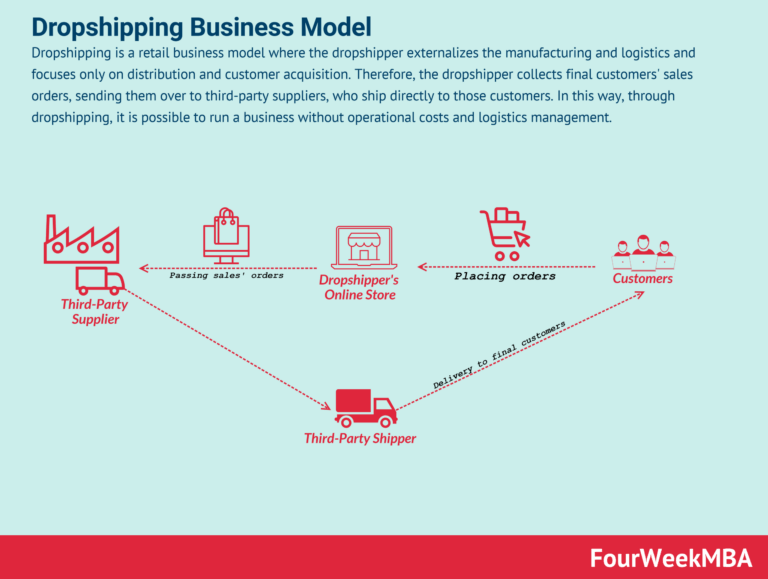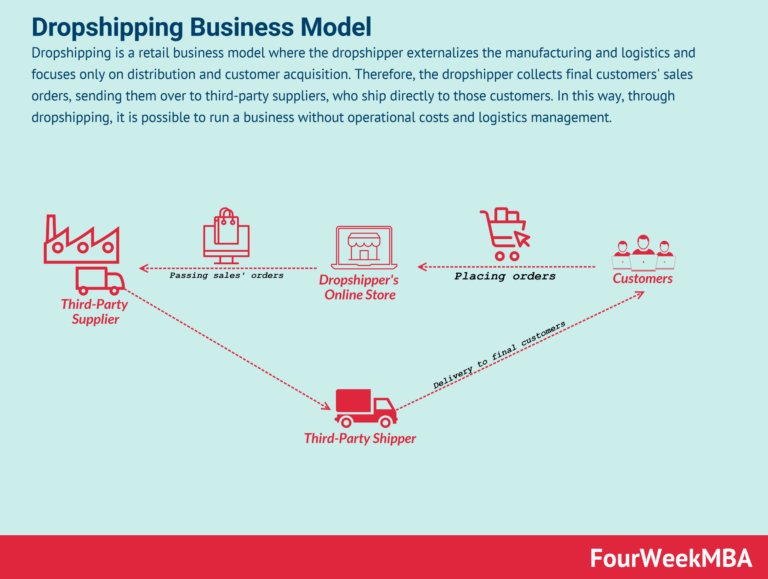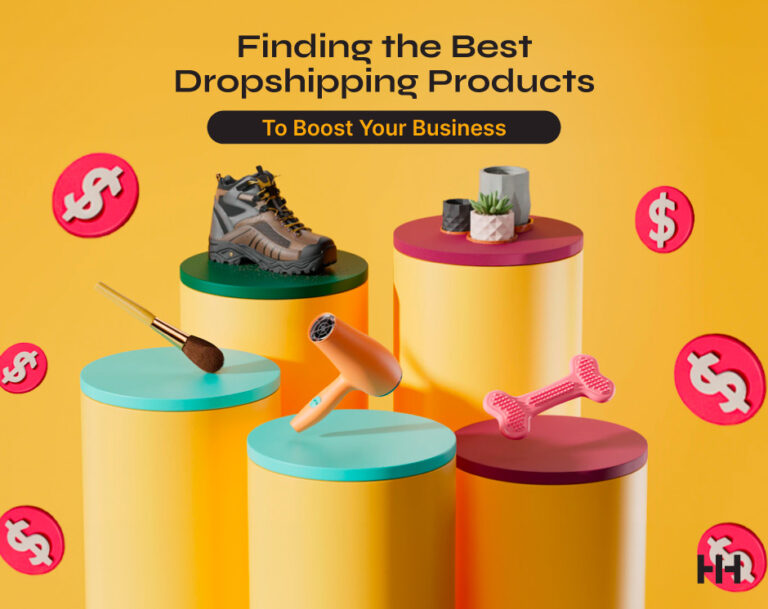How to Start Dropshipping in 2025 (A Beginner’s Guide)
Your Complete Guide to best dropshipping items
Welcome to Your Dropshipping Journey
Congratulations on taking the first step toward your entrepreneurial dream! The world of e-commerce is ripe with opportunities, and as an aspiring entrepreneur, you have the potential to carve out your own niche and build a successful online business. If you’re looking to start with minimal investment, dropshipping is an excellent model to consider.
So, what is dropshipping? Simply put, it’s a retail fulfillment method where you don’t need to hold inventory. Instead, when you sell a product, you purchase the item from a third party—typically a wholesaler or manufacturer—who then ships it directly to your customer. This means you can run your business without the overhead costs associated with traditional retail, such as warehousing and inventory management. The appeal of dropshipping lies in its low startup costs, flexibility, and the ability to operate from anywhere with an internet connection.
In this guide, we will walk you through a complete roadmap to identifying the best dropshipping items for your store. We’ll cover essential topics, including how to research trending products, evaluate their market demand, and understand profit margins. You’ll learn about various product categories that are currently in demand, from fashion and beauty to home goods and pet supplies.
Additionally, we will provide practical tips on selecting reliable suppliers, creating an attractive online storefront, and implementing effective marketing strategies to drive traffic to your store. By the end of this guide, you will not only be equipped with the knowledge to choose the right products but also the confidence to make your first sale.
Remember, every successful entrepreneur started somewhere, and the journey may have its challenges, but it is also incredibly rewarding. With determination and the right guidance, you can turn your vision into a thriving business. Your dream of owning an online store is within reach—let’s embark on this exciting journey together and make it a reality!
What You’ll Learn In This Guide
- Your Complete Guide to best dropshipping items
- How Does Dropshipping Actually Work? A Step-by-Step Breakdown
- The Pros and Cons of Dropshipping: Is It Right for You?
- Step 1: Finding a Profitable Niche and Winning Products
- Step 2: Choosing the Right Dropshipping Suppliers
- Step 3: Building Your Online Store
- Step 4: Marketing Your Dropshipping Business to Get Sales
- Common Mistakes to Avoid as a Beginner
- Frequently Asked Questions (FAQs) about best dropshipping items
- Conclusion: Your Next Steps to Launching Your Business
- Important Disclaimer
How Does Dropshipping Actually Work? A Step-by-Step Breakdown
Understanding the Dropshipping Process: A Step-by-Step Guide
Starting a dropshipping business can seem daunting, but breaking it down into clear steps can simplify the process. Think of yourself as a digital storefront—a facilitator who connects customers with products without ever having to handle the inventory. Here’s how the dropshipping model works in a straightforward, actionable way.
1. Customer Places an Order on Your Online Store
The journey begins when a customer visits your e-commerce website and finds a product they want to purchase. This could be anything from a trendy handbag to a unique kitchen gadget. Once they decide to buy, they add the item to their cart and proceed to checkout, where they enter their shipping information and payment details.
2. You Receive the Payment
After the customer completes their purchase, the payment is processed through your online store. At this stage, you receive the full amount from the customer, which includes the product price plus any shipping fees. This is your opportunity to ensure that your payment gateway is set up correctly, allowing you to accept various payment methods securely.
3. You Forward the Order to Your Supplier
Once the payment is confirmed, your next step is to forward the order details to your supplier. This typically involves sending the customer’s shipping address and the product they ordered. You can automate this process using dropshipping software that integrates with your e-commerce platform, making it seamless and efficient. At this point, you’ll also pay the supplier their wholesale price for the product, which is usually lower than what the customer paid you.
4. The Supplier Ships the Product Directly to the Customer
Now comes the magic of dropshipping: your supplier takes care of the logistics. They package the product and ship it directly to the customer’s address. You don’t need to worry about inventory management, warehousing, or shipping logistics. This step is crucial as it allows you to focus on marketing and growing your business rather than managing physical products.
The Flow of Money and Goods
To further clarify how money and goods flow in dropshipping, let’s visualize it:
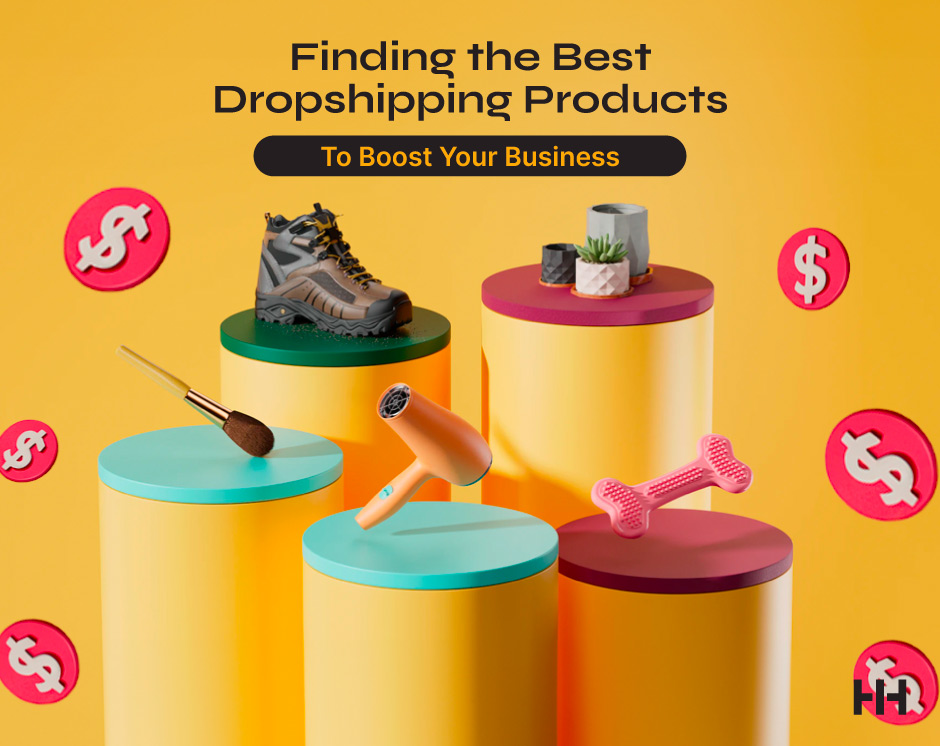
- Customer to You: The customer pays you the retail price for the product.
- You to Supplier: You then pay the supplier the wholesale price for the product.
- Supplier to Customer: Finally, the supplier ships the product to the customer.
This model allows you to earn the difference between the retail price and the wholesale price as your profit. For example, if the customer pays $50 for a handbag and you pay your supplier $30, your profit is $20.
An Analogy for Better Understanding
Think of yourself as a restaurant owner. Customers order food (products) from your menu (website), and they pay you directly. Instead of preparing the food yourself, you have a partnership with a local chef (supplier) who cooks the meals for you. You place the order with the chef, and they deliver the food directly to your customers. You profit from the difference between the price you charge for the meal and what you pay the chef.
Conclusion
By understanding the dropshipping model step-by-step, you can confidently navigate the process of starting your online business. Focus on selecting the right products, marketing your store, and providing excellent customer service. With dedication and the right strategies, you can turn your dropshipping venture into a successful and profitable endeavor. Remember, every successful entrepreneur started where you are now—take that first step and keep moving forward!
The Pros and Cons of Dropshipping: Is It Right for You?
Advantages and Challenges of Dropshipping
| Advantages of Dropshipping (Pros) | Challenges of Dropshipping (Cons) |
|---|---|
| Low Financial Risk: You don’t need to invest heavily in inventory upfront, minimizing the risk of unsold stock. | Low Profit Margins: Profit margins can be thin, especially in competitive niches, making it hard to scale. |
| No Inventory Management: Since you don’t handle products directly, there’s no need for storage or inventory management. | High Competition: The low barrier to entry attracts many new sellers, increasing competition for the same products. |
| Flexible Location: You can run your dropshipping business from anywhere with an internet connection. | Reliance on Suppliers: Your business depends on suppliers’ reliability, affecting shipping times and product quality. |
| Wide Product Selection: You can offer a diverse range of products without significant upfront costs. | Customer Service Challenges: Handling returns or issues can be complicated, as you rely on third parties to fulfill orders. |
| Scalability: It’s easier to scale your business without the limitations of inventory management. | Limited Control Over Branding: You may struggle to create a unique brand identity, as many businesses sell the same products. |
| Quick to Start: Setting up a dropshipping store is relatively fast, allowing you to enter the market quickly. | Marketing Costs: As competition grows, you’ll need to invest more in marketing to stand out, which can eat into your profits. |
| Testing New Products: You can easily test new products without a large financial commitment. | Potential for Poor Customer Experience: Delays in shipping and product quality issues can lead to dissatisfied customers. |
Expanding on the Advantages of Dropshipping
One of the most compelling benefits of dropshipping is the low financial risk involved. For aspiring entrepreneurs, especially those just starting, the ability to run a business without the burden of significant upfront investments in inventory can be a game-changer. You can launch your online store, select a variety of products to offer, and only purchase items when customers place orders. This model allows you to experiment with different products and niches without the fear of incurring losses on unsold stock.
Another advantage is the flexibility and convenience dropshipping offers. You can operate your business from virtually anywhere in the world, as long as you have an internet connection. This freedom not only allows for a better work-life balance but also opens up opportunities for digital nomads or anyone looking to start a side hustle while maintaining a full-time job.
Moreover, the wide product selection available through dropshipping is particularly appealing. Entrepreneurs can offer a vast array of products across various categories, from beauty and home goods to pet supplies and apparel. This diversity allows you to cater to different customer preferences and market trends without being tied to a specific inventory.
Addressing the Challenges of Dropshipping
While dropshipping offers numerous advantages, it’s essential to be aware of its challenges. One of the most significant drawbacks is the low profit margins that often accompany this business model. With many sellers offering similar products, pricing competition can be fierce. As a result, you may find it difficult to establish a sustainable profit margin, especially if you’re in a crowded market. To counteract this, focus on niche markets where you can provide unique value or build a loyal customer base.
Another challenge is the high level of competition. The low barrier to entry means that anyone can start a dropshipping business, leading to a saturated marketplace. To succeed, you’ll need to differentiate your brand and products effectively. This could involve developing a strong online presence, utilizing social media marketing, or leveraging influencer partnerships to build credibility and attract customers.
Additionally, dropshipping involves a reliance on suppliers, which can lead to issues with product quality and shipping times. If your supplier fails to deliver on time or provides subpar products, it reflects poorly on your business. Building strong relationships with reliable suppliers and continuously monitoring their performance is vital to ensure a positive customer experience.
Lastly, the customer service aspect of dropshipping can be challenging. Handling returns, exchanges, or product complaints can become complicated when you’re not in control of the fulfillment process. Establishing clear communication with your suppliers and providing excellent customer support is crucial to maintaining customer satisfaction.
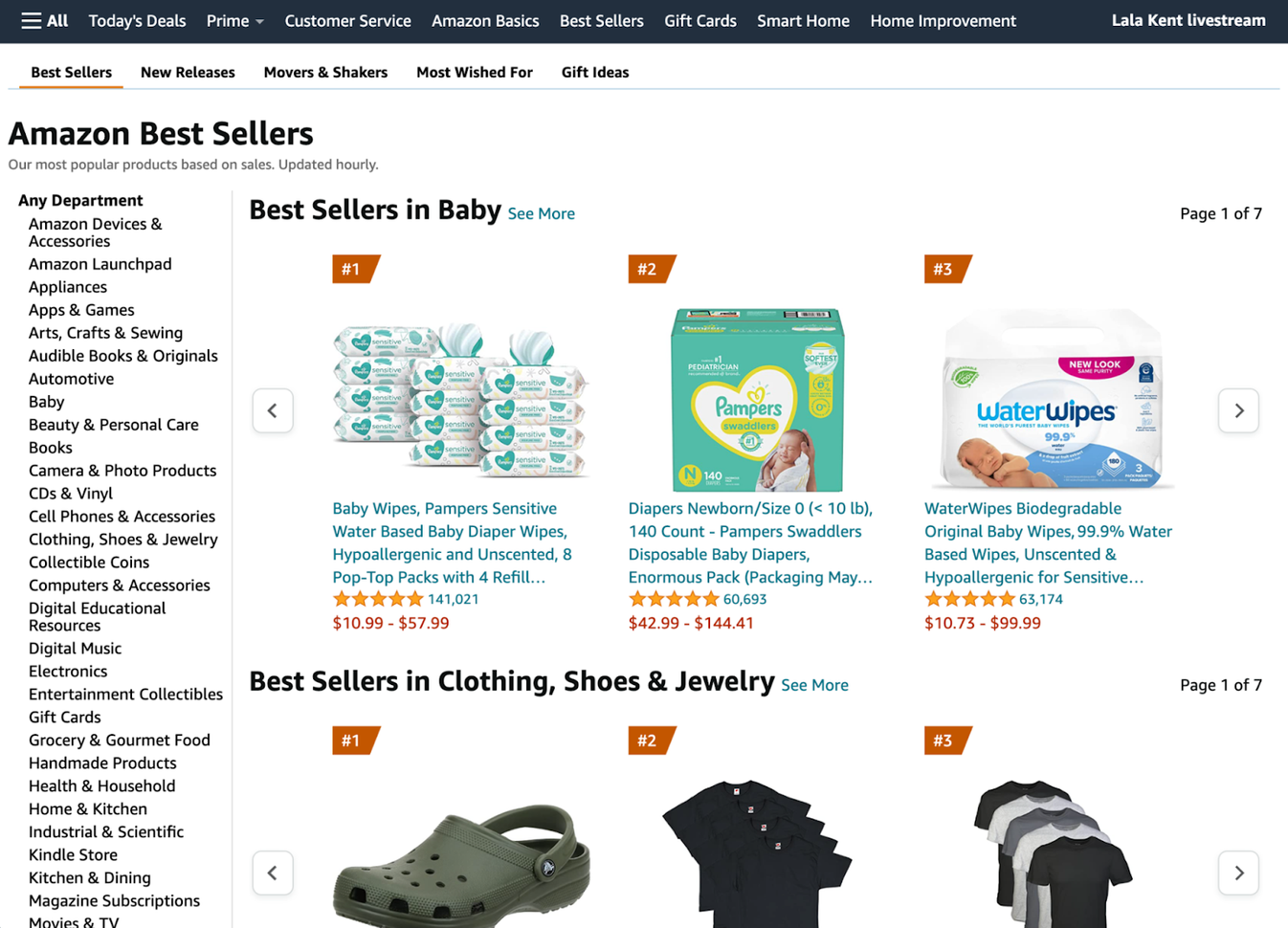
In conclusion, dropshipping can be a fantastic entry point for aspiring entrepreneurs looking to start an online business with minimal investment. However, it’s essential to weigh the pros and cons carefully and be prepared to navigate the challenges that come with this business model. With the right strategies and a commitment to delivering value to your customers, dropshipping can lead to a successful and rewarding venture.
Step 1: Finding a Profitable Niche and Winning Products
What Makes a Good Niche?
Choosing a profitable niche is the cornerstone of your dropshipping business. A good niche should meet several criteria:
-
Passion and Interest: It’s vital to select a niche that resonates with you. Your passion will sustain you through challenges and motivate you to engage with customers and market your products effectively.
-
Market Demand: A niche with a healthy demand indicates that customers are actively searching for products within that category. Utilize tools like Google Trends to analyze search volume and seasonal interest.
-
Competition: While competition can validate a niche, too much can make it difficult for newcomers. Aim for a balance: niches with moderate competition often present the best opportunities. Tools like SEMrush or Ahrefs can help analyze competition levels.
-
Profit Margins: Ensure the niche can support a profitable business model. Look for products that have at least a 30% markup after considering costs like shipping and supplier fees.
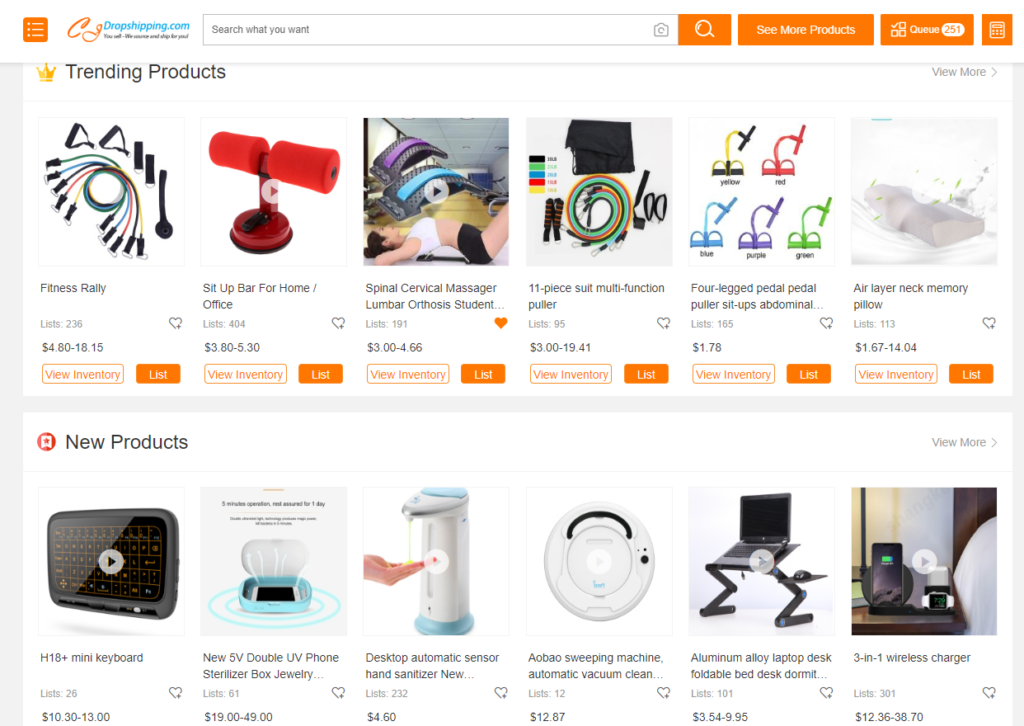
-
Target Audience: Understand who your customers are, their demographics, and purchasing behaviors. A clearly defined target audience allows for more effective marketing strategies.
How to Brainstorm Niche Ideas
Brainstorming niche ideas can be an exciting process. Here are some actionable strategies to generate ideas:
-
Personal Interests and Hobbies: Start by listing your interests, hobbies, and areas of expertise. This can lead to niche ideas that you’re passionate about and knowledgeable in.
-
Online Communities: Engage in forums, social media groups, and subreddits related to your interests. Pay attention to common questions, challenges, and product requests within these communities.
-
Keyword Research: Use tools like Ubersuggest or Google Keyword Planner to explore search terms related to your interests. Look for keywords with high search volume and low competition.
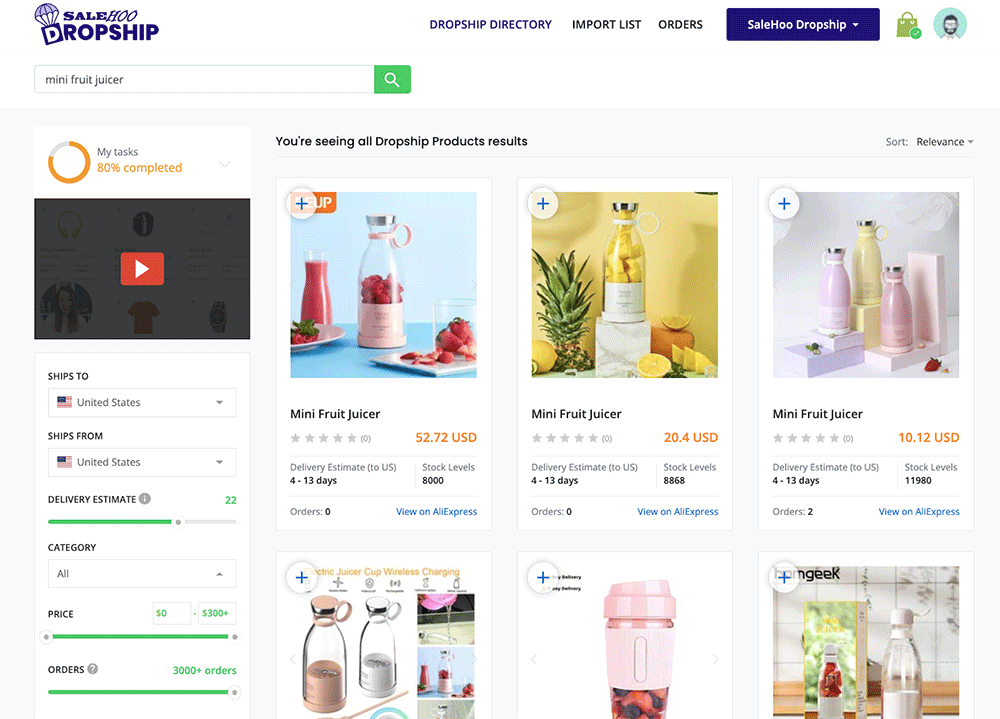
-
Trending Products: Platforms like Pinterest, Instagram, and TikTok are great for spotting trends. Look for products that are gaining popularity and consider how you can capitalize on them.
-
Marketplaces: Browse through categories on websites like Amazon, eBay, and Etsy. Check best-sellers and customer reviews to identify gaps in the market where demand exceeds supply.
-
Seasonal Trends: Consider seasonal products that may have spikes in demand at certain times of the year, such as holiday decorations or summer apparel. This can provide opportunities for niche marketing.
Validating Your Niche
Once you have a niche idea, validating it is crucial to ensure its viability. Here are some steps to validate your niche:
-
Competitive Analysis: Examine existing businesses in your niche. Analyze their product offerings, pricing strategies, and customer engagement. Tools like SimilarWeb can provide insights into their traffic sources and audience demographics.
-
Customer Surveys: Conduct surveys or polls within relevant online communities or your social media followers. Ask potential customers about their needs, preferences, and willingness to purchase products in your niche.
-
Test Marketing: Create a simple landing page showcasing your products and run a targeted ad campaign. Analyze the conversion rates and customer engagement to gauge interest before fully committing to the niche.
-
Pre-Order or Crowdfunding: Consider launching a pre-order campaign or using crowdfunding platforms like Kickstarter. This can help you assess demand while simultaneously generating funds for product development.
-
Sales Data: If possible, utilize sales data from suppliers or similar businesses. Understanding sales trends can provide valuable insights into your niche’s potential profitability.
Methods for Finding Winning Products
Finding winning products is essential to your dropshipping success. Here are some effective methods and criteria for identifying them:
-
Supplier Marketplaces: Explore supplier marketplaces like AliExpress, Oberlo, or Spocket. Look for products with high order volumes and positive reviews. These indicators suggest a product’s popularity and reliability.
-
Social Media Trends: Monitor platforms like Instagram, TikTok, and Pinterest for trending products. Use hashtags and follow influencers in your niche to discover what’s popular among consumers.
-
Google Trends: Utilize Google Trends to analyze search interest over time for specific products. This can help you identify rising trends and seasonal peaks.
-
Product Criteria: When evaluating potential products, consider the following criteria:
- Price Point: Aim for products priced between $15 to $100. This range often provides a good balance between affordability and profit margins.
- Unique Selling Proposition (USP): Look for products that offer unique features or solve specific problems. This can differentiate you from competitors.
- Shipping Considerations: Choose lightweight products to minimize shipping costs and ensure faster delivery times.
-
Not Easily Found in Stores: Focus on niche products that aren’t readily available in local stores, making them more appealing to online shoppers.
-
Customer Reviews: Analyze customer reviews on platforms like Amazon or AliExpress to identify common pain points. This can inform your product descriptions and help you market effectively by addressing these concerns.
-
Influencer Collaborations: Partner with influencers to promote your products. Their endorsements can provide social proof and drive traffic to your store.
Conclusion
Finding a profitable niche and winning products is a foundational step in your dropshipping journey. By following these strategies—identifying what makes a good niche, brainstorming effectively, validating your ideas, and leveraging various methods to discover winning products—you set yourself up for success. Remember to stay adaptable and responsive to market trends, as this flexibility will help you thrive in the dynamic world of e-commerce. Keep your passion alive, and don’t hesitate to experiment—your entrepreneurial adventure is just beginning!
Step 2: Choosing the Right Dropshipping Suppliers
Finding Reliable Dropshipping Suppliers
Choosing the right dropshipping supplier is crucial to the success of your online business. A reliable supplier not only ensures that your products are of good quality but also plays a significant role in your brand’s reputation and customer satisfaction. In this section, we’ll explore some popular platforms for sourcing dropshipping suppliers, their pros and cons, and provide a checklist to help you evaluate potential partners.
AliExpress
Overview
AliExpress is one of the largest online retail platforms, connecting suppliers primarily from China with global buyers. It offers a vast array of products across various categories, making it a popular choice for new dropshippers.
Pros:
– Wide Selection: With millions of products available, you can easily find items that fit your niche.
– Low Prices: Direct access to manufacturers means lower prices, which can lead to higher profit margins.
– No Minimum Order Quantity: You can order a single item, which is ideal for testing products without a significant upfront investment.
– Buyer Protection: AliExpress provides a buyer protection program that can help safeguard your transactions.
Cons:
– Shipping Times: Many suppliers are based in China, leading to longer shipping times, which can affect customer satisfaction.
– Quality Variability: The quality of products can vary significantly between suppliers, requiring thorough vetting.
– Limited Branding Options: Many products are generic, making it hard to create a unique brand identity.
CJ Dropshipping
Overview
CJ Dropshipping is a comprehensive platform that simplifies the dropshipping process by offering a wide range of products, order fulfillment services, and even print-on-demand options.
Pros:
– Fast Shipping Options: CJ has warehouses in various countries, including the U.S. and Europe, which can significantly reduce shipping times.
– Product Customization: Offers print-on-demand services, allowing for unique branding opportunities.
– Integrated Services: Provides additional services like photography, product sourcing, and order fulfillment, which can save you time.
– Responsive Customer Service: Known for its helpful support team, which can assist you in navigating issues.
Cons:
– Learning Curve: The platform can be complex for beginners, requiring time to learn how to navigate it effectively.
– Variable Product Quality: Similar to AliExpress, product quality can vary, necessitating careful supplier selection.
– Fees for Certain Services: Some additional services may come with fees, which could affect your profit margins.
USA-Based Suppliers
Overview
Using USA-based suppliers can be beneficial for dropshippers looking to provide faster shipping times and improve customer satisfaction. These suppliers often cater to specific niches and focus on high-quality products.
Pros:
– Faster Shipping Times: With suppliers based in the U.S., you can offer your customers quicker delivery, enhancing their shopping experience.
– Higher Product Quality: Many U.S. suppliers maintain stricter quality control standards, leading to better product consistency.
– Easier Returns: Handling returns can be simpler with local suppliers, as customers can ship items back without international complications.
– Branding Opportunities: U.S. suppliers often offer customizable products, allowing you to create a unique brand identity.
Cons:
– Higher Prices: U.S. suppliers typically charge more than those based in Asia, which can reduce profit margins.
– Limited Product Range: The selection may be narrower compared to international platforms like AliExpress.
– Minimum Order Requirements: Some suppliers may require a minimum order, which can be a barrier for new dropshippers.
What to Look for in a Good Supplier
When evaluating potential dropshipping suppliers, consider the following checklist to ensure you choose the best partner for your business:
- Communication:
- Is the supplier responsive and easy to communicate with?
-
Do they provide clear information regarding product details, pricing, and shipping?
-
Shipping Times:
- What are the average shipping times to your target markets?
-
Are there expedited shipping options available?
-
Product Quality:
- Can you request samples to evaluate product quality before committing?
-
Are there reviews or testimonials available from other dropshippers?
-
Return Policies:
- What is the supplier’s policy on returns and refunds?
-
Are there clear instructions for handling defective or unsatisfactory products?
-
Pricing Structure:
- Does the supplier offer competitive pricing that allows for a reasonable profit margin?
-
Are there any hidden fees, such as restocking fees or shipping costs?
-
Inventory Management:
- Does the supplier have a reliable inventory system to prevent stockouts?
-
How often do they update their product listings?
-
Reputation and Trustworthiness:
- What is the supplier’s track record in the dropshipping community?
-
Are there any red flags, such as frequent complaints or negative reviews?
-
Integration with E-commerce Platforms:
- Does the supplier integrate smoothly with your chosen e-commerce platform (e.g., Shopify, WooCommerce)?
- Are there automated order fulfillment options to streamline your operations?
Conclusion
Selecting the right dropshipping supplier can significantly impact your business’s success. By understanding the pros and cons of various platforms like AliExpress, CJ Dropshipping, and USA-based suppliers, you can make an informed choice that aligns with your business goals. Utilize the checklist provided to evaluate potential partners, ensuring they meet your standards for communication, shipping times, product quality, and more. With the right supplier, you’ll be on your way to building a successful dropshipping business that delights your customers and drives profitability.
Step 3: Building Your Online Store
Setting Up Your Online Store on Shopify
Starting your dropshipping business is an exciting venture, and setting up your online store is a crucial step in your journey. Shopify is one of the most popular e-commerce platforms, favored by many dropshippers for its user-friendly interface, extensive features, and robust support. This guide will walk you through the essential steps to build your online store effectively.
1. Choosing a Shopify Plan
Before you start designing your store, you need to choose a Shopify plan that suits your needs. Shopify offers several pricing tiers, each with varying features:
- Basic Shopify: Ideal for beginners, offering essential e-commerce functionalities.
- Shopify: Includes additional features like professional reports.
- Advanced Shopify: Best for scaling businesses with advanced reporting and lower transaction fees.
For most beginners, the Basic Shopify plan is a great starting point. You can always upgrade later as your business grows. Take advantage of Shopify’s free trial to explore the platform and familiarize yourself with its features before committing.
2. Picking a Theme
Once you’ve selected your plan, it’s time to design your store. Shopify offers a variety of themes—both free and paid—that can give your store a professional look. Here’s how to choose the right theme:
- Consider Your Niche: Select a theme that reflects your product category. For example, a clean and minimalistic theme works well for fashion, while a vibrant theme may suit a toy store.
- Mobile Responsiveness: Ensure your chosen theme is mobile-friendly, as a significant portion of online shopping occurs on mobile devices.
- Customization Options: Look for themes that allow easy customization without needing coding skills.
You can browse themes directly from the Shopify Theme Store. Take your time to preview and test different themes until you find one that resonates with your brand.
3. Setting Up Essential Pages
Creating essential pages is vital for building trust with your customers and ensuring a smooth shopping experience. Here are the key pages you should set up:
- About Us Page: Share your story, mission, and values. This helps customers connect with your brand on a personal level.
- Contact Page: Provide multiple ways for customers to reach you, including an email address, phone number, and a contact form.
- Policies: Clearly outline your shipping, return, and privacy policies. This transparency builds trust and helps prevent misunderstandings.
You can create these pages easily within Shopify by navigating to the “Online Store” section and selecting “Pages.” Use clear and concise language to communicate your policies effectively.
4. Installing Key Apps
To enhance your store’s functionality, installing key apps is essential. Here are some recommended apps for dropshippers:
- DSers or CJ Dropshipping: These apps help you import products from suppliers to your Shopify store efficiently. They also allow you to manage your orders and track shipments seamlessly.
- Oberlo: If you’re starting with AliExpress, Oberlo is another excellent app for importing products directly into your Shopify store.
- Klaviyo or Mailchimp: Email marketing apps that can help you build and maintain customer relationships through newsletters and promotional campaigns.
To install apps, go to the Shopify App Store and search for the apps you need. Most of these apps offer free trials, so you can test them before committing to a subscription.
5. Setting Up Payment Gateways
A critical aspect of your online store is enabling payment options for your customers. Shopify supports various payment gateways, including:
- Shopify Payments: A built-in payment processor that allows you to accept credit cards directly.
- PayPal: A widely recognized payment option that many customers prefer.
- Stripe: Another popular choice for processing credit card payments.
To set up payment gateways, navigate to the “Settings” section in your Shopify admin and select “Payments.” Follow the prompts to connect your preferred payment methods. Ensure that your chosen gateways align with your target audience’s preferences for a smoother checkout experience.
Alternative: WooCommerce
While Shopify is an excellent choice for beginners, you might also consider WooCommerce if you prefer a more customizable solution. WooCommerce is a plugin for WordPress that allows you to turn your website into a fully functional e-commerce store. It offers extensive customization options and flexibility, making it ideal for those with some technical skills.
However, keep in mind that WooCommerce may require more hands-on management and hosting considerations than Shopify, which is a fully hosted solution. If you are looking for simplicity and ease of use, Shopify remains the better option.
Final Thoughts
Building your online store on Shopify doesn’t have to be overwhelming. By following these steps—choosing the right plan, picking an appealing theme, creating essential pages, installing key apps, and setting up payment gateways—you’ll be well on your way to launching a successful dropshipping business. Remember, the key is to stay focused on your niche, provide excellent customer service, and continuously optimize your store based on customer feedback and trends. Good luck, and enjoy the journey of entrepreneurship!
Step 4: Marketing Your Dropshipping Business to Get Sales
Social Media Marketing (TikTok & Instagram)
Social media platforms like TikTok and Instagram are powerful tools for promoting your dropshipping business. They allow you to connect with your target audience, showcase your products, and build a community around your brand. Here are some actionable tips to leverage these platforms effectively:
- Create Engaging Content
- Showcase Your Products: Use high-quality images and videos to highlight your products. For instance, if you’re selling skincare items, create before-and-after videos showing the results. Instagram Stories and TikTok videos can be particularly effective for this.
-
Utilize User-Generated Content (UGC): Encourage your customers to share their experiences with your products. Repost their content on your social channels to build trust and authenticity.
-
Leverage Hashtags Strategically
- Research Popular Hashtags: Use tools like Hashtagify or RiteTag to find trending hashtags in your niche. For example, if you sell pet supplies, hashtags like #PetCare or #DogLovers can help increase your reach.
-
Create a Brand Hashtag: Develop a unique hashtag for your brand to encourage customers to use it when posting about your products. This not only increases visibility but also creates a community around your brand.
-
Collaborate with Influencers
- Identify Relevant Influencers: Find micro-influencers in your niche who resonate with your target audience. They often have higher engagement rates and can promote your products authentically.
-
Run Giveaways or Contests: Partner with influencers to host giveaways. This can boost your follower count and generate buzz around your products. For example, you could give away a bundle of your best-selling items, requiring participants to follow your account and tag friends to enter.
-
Utilize Stories and Reels
- Behind-the-Scenes Content: Use Instagram Stories and TikTok to share behind-the-scenes looks at your business, such as product sourcing or packaging. This humanizes your brand and makes it more relatable.
- Short Tutorials: Create quick tutorials or tips related to your products. For instance, if you sell kitchen gadgets, share recipes or cooking hacks using your products.
Paid Advertising (Facebook/Instagram Ads)
Paid advertising can effectively drive traffic and sales to your dropshipping store. Here’s how to make the most of Facebook and Instagram Ads:
- Define Your Target Audience
- Utilize Facebook’s Audience Insights: Use this tool to understand your potential customers’ demographics, interests, and behaviors. This helps you create targeted ads that resonate with your audience.
-
Create Custom Audiences: Upload your email list to Facebook to create Custom Audiences. This allows you to retarget existing customers or those who have shown interest in your products.
-
Craft Compelling Ad Copy and Visuals
- Focus on Benefits, Not Just Features: Highlight how your product solves a problem. For example, instead of just stating that a blender has a powerful motor, explain how it saves time in meal prep.
-
Use High-Quality Images or Videos: Invest in professional photography or create engaging videos showcasing your product in action. Ads with visually appealing content tend to perform better.
-
A/B Test Your Ads
- Experiment with Different Formats: Test various ad formats, such as carousel ads, video ads, and slideshow ads, to see which resonates best with your audience.
-
Monitor Performance Metrics: Keep an eye on key metrics like click-through rates (CTR) and conversion rates to identify what works and what doesn’t. Adjust your strategy accordingly.
-
Utilize Retargeting Strategies
- Set Up Retargeting Campaigns: Use Facebook Pixel to track visitors to your site and retarget them with ads. This reminds potential customers of products they viewed and encourages them to complete their purchase.
- Create Dynamic Ads: These ads automatically show the right products to people who have expressed interest in your website, increasing the chances of conversion.
Search Engine Optimization (SEO)
SEO is crucial for driving organic traffic to your dropshipping store. Here are some actionable tips to improve your site’s visibility on search engines:
- Conduct Keyword Research
- Use Tools like Google Keyword Planner or Ubersuggest: Identify keywords relevant to your products. Focus on long-tail keywords that are less competitive and more specific, like “eco-friendly dog toys” instead of just “dog toys.”
-
Analyze Competitors: Look at the keywords your competitors rank for. This can provide insights into potential keywords you may have overlooked.
-
Optimize Your Product Descriptions
- Incorporate Keywords Naturally: Use your researched keywords in product titles, descriptions, and meta tags. Ensure the content reads naturally and is informative.
-
Write Unique Descriptions: Avoid using manufacturer descriptions. Create unique, engaging content that highlights the benefits and features of your products.
-
Improve Site Speed and Mobile Optimization
- Use Tools like Google PageSpeed Insights: Test your website’s speed and identify areas for improvement. A faster site enhances user experience and can boost your SEO rankings.
-
Ensure Mobile Responsiveness: With a significant amount of shopping done on mobile devices, make sure your site is optimized for mobile users. This includes having a mobile-friendly layout and fast loading times.
-
Create High-Quality Content
- Start a Blog: Share valuable content related to your niche. For example, if you sell kitchen gadgets, write articles about cooking tips or recipes. This not only drives traffic but also establishes your brand as an authority in your field.
- Use Visual Content: Incorporate images, infographics, and videos in your content to make it more engaging. Visuals can also improve time spent on your site, positively impacting SEO.
Email Marketing
Email marketing remains one of the most effective ways to engage with your customers and drive sales. Here are some strategies to build and optimize your email marketing efforts:
- Build a Targeted Email List
- Use Lead Magnets: Offer incentives, like discounts or exclusive content, to encourage visitors to subscribe to your email list. For instance, a 10% discount on their first purchase can be a compelling offer.
-
Implement Exit-Intent Popups: Capture potential customers before they leave your site with a popup offering a lead magnet in exchange for their email address.
-
Segment Your Audience
- Categorize Subscribers: Segment your email list based on demographics, purchase history, or engagement levels. This allows you to tailor your messages to different groups, increasing relevance and effectiveness.
-
Personalize Your Emails: Use the subscriber’s name and recommend products based on their previous purchases. Personalized emails can lead to higher open and conversion rates.
-
Create Engaging Email Campaigns
- Craft Compelling Subject Lines: Your subject line is the first thing subscribers see. Make it catchy and relevant to encourage opens. For example, “Unlock 20% Off Your Favorite Products!” can be effective.
-
Include Clear Calls to Action (CTAs): Ensure your emails have clear CTAs that guide subscribers on what to do next, such as “Shop Now” or “Claim Your Discount.”
-
Analyze and Optimize Your Campaigns
- Track Key Metrics: Monitor open rates, click-through rates, and conversion rates to gauge your campaigns’ effectiveness. Tools like Mailchimp or Constant Contact can help with this.
- A/B Test Your Emails: Experiment with different subject lines, content formats, and send times to determine what resonates best with your audience. Use the insights gained to refine your strategy.
By implementing these marketing strategies, you can effectively promote your dropshipping business, connect with your target audience, and drive sales. Remember, consistency and adaptation are key—regularly analyze your results and adjust your tactics to stay ahead in the competitive e-commerce landscape.
Common Mistakes to Avoid as a Beginner
1. Choosing a Bad Niche
One of the most significant mistakes new dropshippers make is selecting a niche that is either overly saturated or lacks demand. A niche with too much competition can make it challenging to stand out, while an untested niche may not yield sales.
Solution: Conduct thorough market research before settling on a niche. Use tools like Google Trends, keyword research, and competitor analysis to determine product demand. Focus on niches that align with your interests and have a sustainable market.
2. Not Testing Products
Many beginners jump into selling a product without first validating its appeal. Skipping the product testing phase can lead to wasted marketing dollars and unsold inventory.
Solution: Implement a testing strategy where you order samples and gauge their quality. Consider running small ad campaigns to see how the market responds to the product before fully committing to it.
3. Poor Customer Service
In the world of e-commerce, customer service can make or break your business. New dropshippers often underestimate the importance of responsive and helpful customer support, which can lead to negative reviews and lost customers.
Solution: Establish clear communication channels and respond to customer inquiries promptly. Utilize automated chatbots for common questions and make sure to follow up on any unresolved issues. Prioritize customer satisfaction to build loyalty.
4. Ignoring Shipping Times
Shipping times are critical in the dropshipping business model. Many beginners overlook the impact of long shipping durations on customer satisfaction, leading to frustration and order cancellations.
Solution: Be transparent about shipping times on your website. Set realistic expectations for your customers and consider sourcing products from suppliers that offer faster shipping options. Communicate proactively with customers regarding any potential delays.
5. Unrealistic Profit Expectations
New entrepreneurs often have inflated expectations about profit margins and sales volume. This can lead to disillusionment when reality falls short of their initial projections.
Solution: Create a realistic financial plan that includes all expenses (shipping, marketing, product costs) and set achievable sales goals. Use historical data and industry benchmarks to inform your expectations and adjust them as you gather more information.
6. Neglecting Marketing Strategies
Many beginners underestimate the importance of a solid marketing strategy. Relying solely on organic traffic can limit growth and visibility.
Solution: Develop a comprehensive marketing plan that includes social media advertising, influencer partnerships, email marketing, and content creation. Experiment with different channels to see which works best for your audience and adjust your strategy accordingly.
7. Not Building a Brand
A common mistake is focusing solely on selling products rather than building a recognizable brand. This can hinder customer loyalty and repeat purchases.
Solution: Invest time in creating a brand identity that resonates with your target audience. This includes a unique logo, consistent messaging, and an engaging story behind your business. Create a memorable shopping experience that encourages customers to return.
8. Failing to Optimize the Website
A poorly designed website can deter potential customers. Beginners often overlook user experience, leading to high bounce rates and abandoned carts.
Solution: Optimize your website for ease of navigation, speed, and mobile-friendliness. Use high-quality images and clear product descriptions. Regularly test and update your site to ensure it provides a seamless shopping experience.
9. Overlooking Legal and Tax Obligations
Many new dropshippers neglect to consider the legal and tax implications of running an online business. This oversight can lead to compliance issues down the road.
Solution: Research the legal requirements for starting a dropshipping business in your jurisdiction. Consult with a legal expert to ensure you understand tax obligations, business licenses, and any regulations that may apply to your niche.
10. Ignoring Analytics and Data
Lastly, beginners often fail to leverage analytics tools to track performance. Without data, it’s challenging to understand what’s working and what’s not.
Solution: Utilize tools like Google Analytics and social media insights to monitor your website traffic, conversion rates, and customer behavior. Regularly analyze this data to refine your strategies and make informed decisions that drive growth.
By avoiding these common pitfalls and implementing the suggested solutions, you can set a strong foundation for your dropshipping business and increase your chances of success. Remember, every mistake is an opportunity to learn and grow, so stay adaptable and focused on your goals.
Frequently Asked Questions (FAQs) about best dropshipping items
1. What are the best dropshipping items to sell?
The best dropshipping items typically fall within high-demand categories such as apparel, beauty products, kitchen gadgets, baby products, and pet supplies. Focus on trending products within these categories, such as sustainable fashion items, organic skincare, reusable kitchen tools, and innovative pet accessories. Research market trends and consumer preferences to identify the most profitable items for your niche.
2. How do I find trending dropshipping products?
To find trending dropshipping products, utilize tools like Google Trends, social media platforms (especially TikTok and Instagram), and market research websites. Joining dropshipping communities and forums can also provide insights into what products are currently popular. Additionally, check platforms like Shopify and Oberlo for curated lists of trending items.
3. How much money do I need to start a dropshipping business?
You can start a dropshipping business with a budget as low as $200 to $500. This initial investment covers setting up an online store (using platforms like Shopify), purchasing a domain, and basic marketing efforts. However, be prepared to invest more in advertising as you scale your business to drive traffic and sales.
4. Do I need to register a company to start dropshipping?
While it’s not legally required to register a business to start dropshipping, it’s highly recommended. Registering your business can provide legal protection, allow you to open a business bank account, and make tax filing easier. Check your local regulations to determine the best structure for your business, such as a sole proprietorship or LLC.
5. How do I handle returns and refunds?
Handling returns and refunds in dropshipping can vary depending on your supplier’s policies. It’s crucial to outline your return policy clearly on your website to set customer expectations. Work with suppliers who offer reliable return options and communicate with your customers promptly about their returns. Always prioritize customer satisfaction to build trust and encourage repeat business.
6. What are high-profit margin products for dropshipping?
High-profit margin products typically include niche items that have lower competition and higher perceived value. Categories like luxury beauty products, fitness gear, and specialized pet supplies often yield higher margins. Research estimated profits for specific products to determine which ones align with your pricing strategy and target market.
7. How do I choose a reliable dropshipping supplier?
Choosing a reliable dropshipping supplier involves researching their reputation, product quality, shipping times, and customer service. Look for suppliers with positive reviews, a proven track record, and clear communication. Platforms like AliExpress, SaleHoo, and Spocket can help you connect with reputable suppliers. Always order samples to assess product quality before listing items in your store.
8. Can I dropship internationally?
Yes, you can dropship internationally, but it requires careful planning. Consider factors such as shipping costs, delivery times, customs regulations, and potential tariffs. Some suppliers offer international shipping, so ensure they can deliver to your target countries efficiently. Tailor your marketing strategies to appeal to local preferences and cultural nuances.
9. How do I market my dropshipping products?
To effectively market your dropshipping products, leverage social media platforms, influencer partnerships, email marketing, and content marketing. Create engaging content that highlights your products and connects with your audience. Paid advertising on platforms like Facebook and Google Ads can also drive targeted traffic to your store. Start small, analyze your results, and adjust your strategy as needed.
10. What tools do I need to start a dropshipping business?
Starting a dropshipping business requires a few essential tools:
– E-commerce platform: Shopify, WooCommerce, or BigCommerce.
– Payment processor: PayPal, Stripe, or Square.
– Marketing tools: Mailchimp for email marketing, Canva for graphics, and social media management tools.
– Analytics tools: Google Analytics to track website performance and customer behavior.
Investing in these tools will help streamline your operations and enhance your overall business efficiency.
Conclusion: Your Next Steps to Launching Your Business
Taking the First Step Towards Your Dropshipping Success
Launching your dropshipping business is an exciting journey, but it’s essential to approach it with a clear plan and realistic expectations. Here’s a concise roadmap to help you get started:
-
Research Your Niche: Identify a niche that resonates with your interests and has market demand. Utilize tools like Google Trends and keyword research to gauge interest and profitability. Categories such as apparel, beauty products, and home décor are currently thriving.
-
Select Winning Products: Based on your niche research, choose products with high profit margins and steady demand. Look for trending items, such as eco-friendly beauty products or innovative kitchen gadgets, to capture consumer interest.
-
Choose a Reliable Supplier: Partner with trustworthy suppliers who offer quality products and reliable shipping. Platforms like Oberlo or Spocket can help you find vetted suppliers who are ready for dropshipping.
-
Build Your Online Store: Create an attractive and user-friendly e-commerce website using platforms like Shopify or WooCommerce. Ensure your site is optimized for mobile devices and provides a seamless shopping experience.
-
Develop a Marketing Strategy: Utilize social media, email marketing, and SEO to attract and engage your target audience. Influencer collaborations can also be a powerful way to boost visibility.
-
Focus on Customer Service: Exceptional customer service is vital for building loyalty. Respond promptly to inquiries and handle any issues efficiently to create a positive shopping experience.
Remember, dropshipping is not a get-rich-quick scheme; it requires dedication, learning, and consistent effort. Embrace the challenges as opportunities for growth.
Your Journey Begins Now
Take that first step today! Whether it’s conducting niche research, setting up your store, or reaching out to suppliers, each action moves you closer to your entrepreneurial dreams. Believe in your vision, stay committed, and watch as you turn your aspirations into reality. The world of e-commerce awaits you—let’s get started!
Important Disclaimer
⚠️ Important Disclaimer
The information provided in this guide is for educational purposes only. Starting a business involves risks, and success is not guaranteed. Please conduct your own thorough research and consider consulting with financial and legal professionals before making any business decisions.



